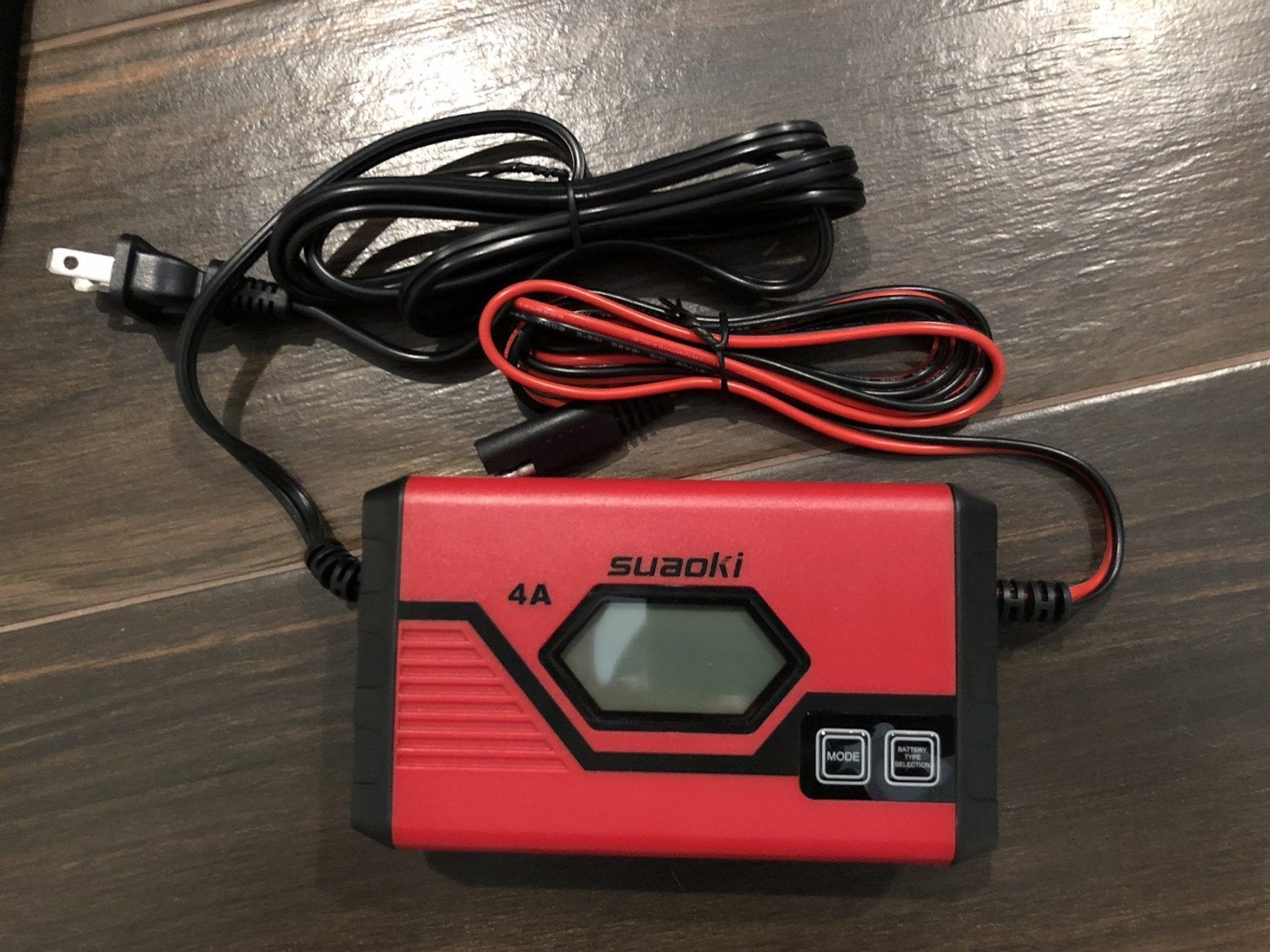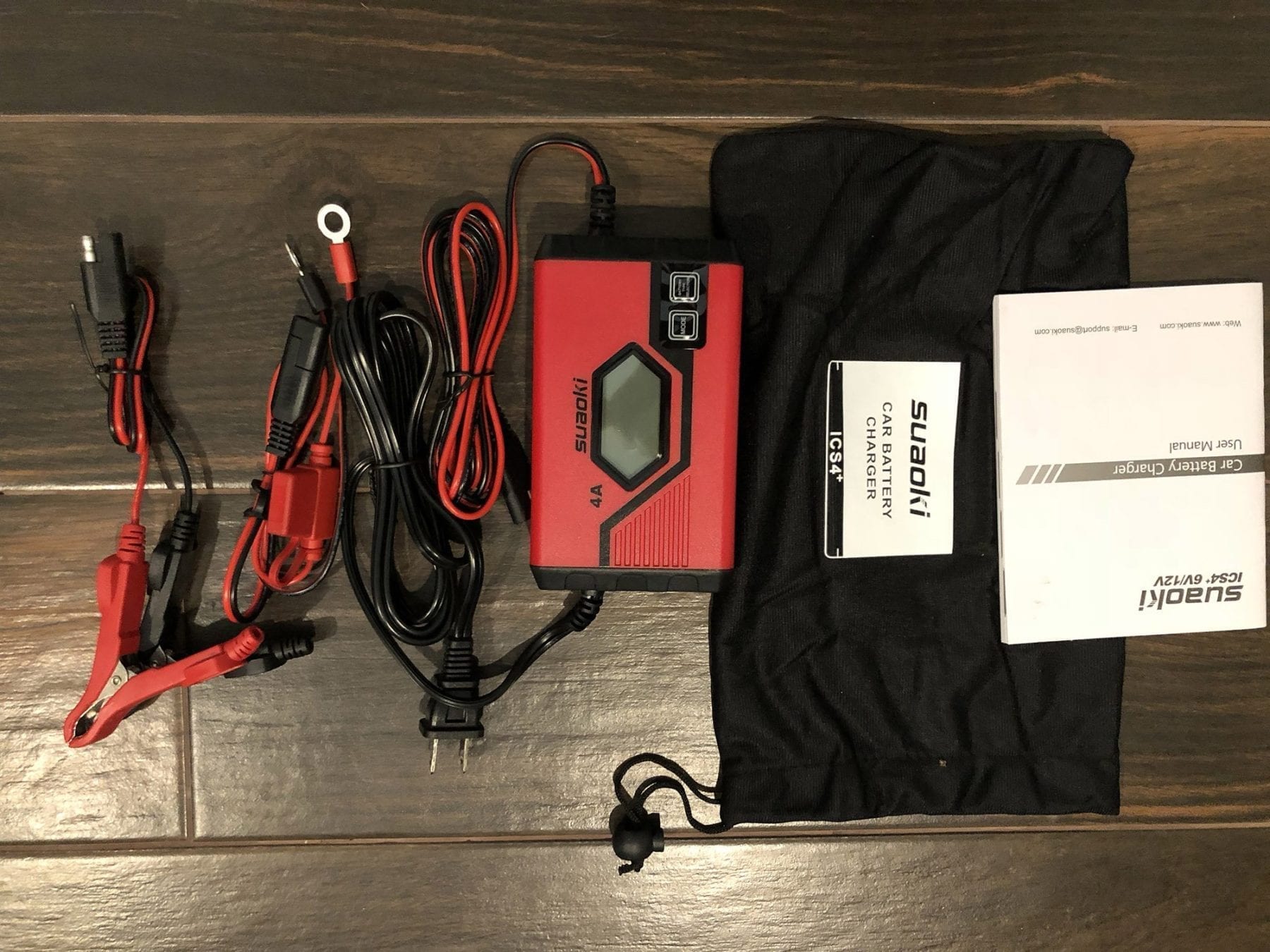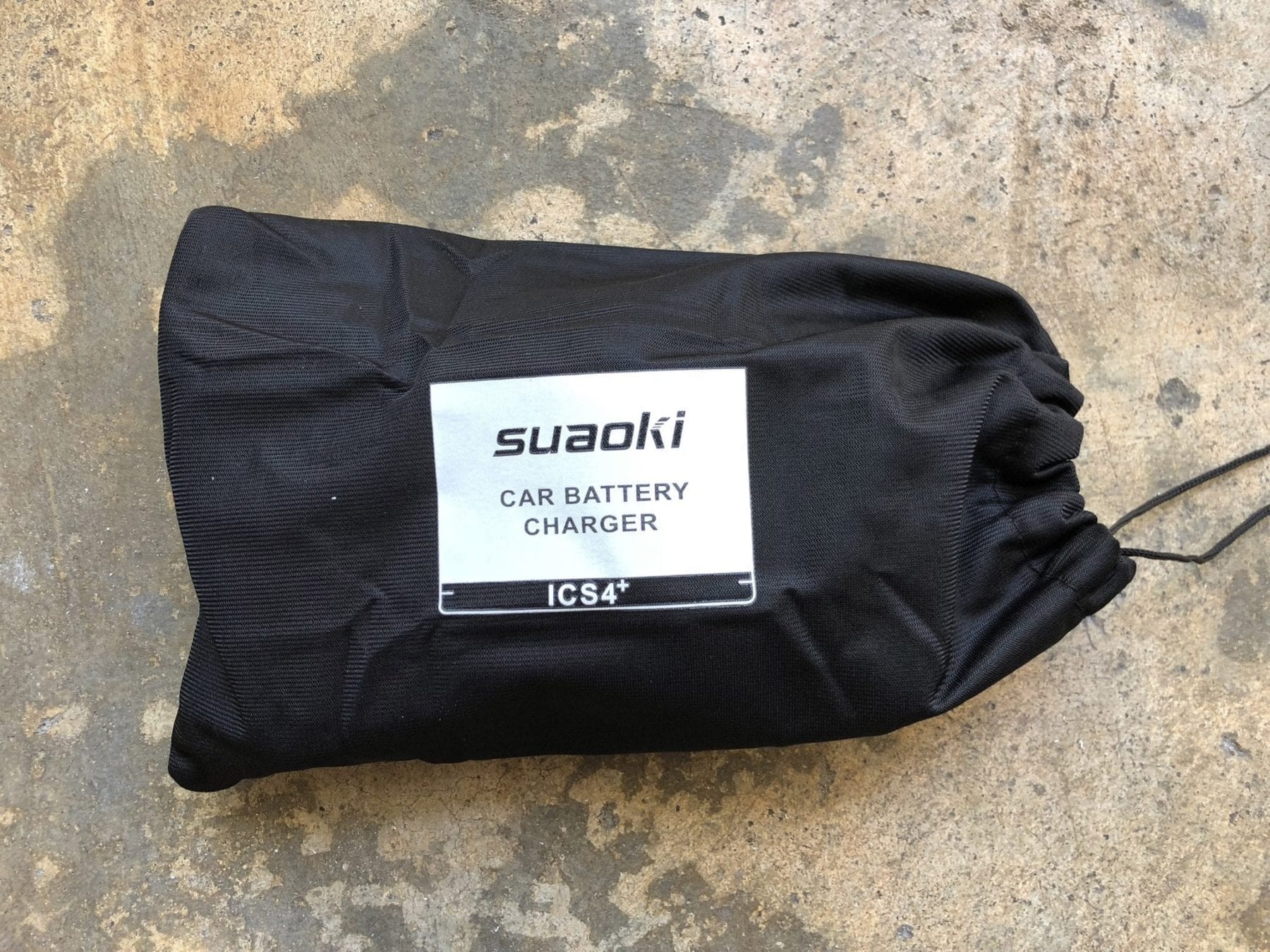Home > Product Installs & Reviews > Product Reviews > Car Accessory Reviews > Suaoki Car Battery Charger | A Must Have for Every Home
Every vehicle has a battery. Whether you’re driving a golf cart, a motorcycle or an SUV, a battery gets it running. (And keeps it running, in the case of pure electric transport like wheelchairs and electric golf carts.) Even those little electrically-powered golf caddies use batteries. And when the battery’s dead you’re not going anywhere.
That’s why it pays to keep a battery charger around your house or garage. With one of these you can put energy back into a depleted battery and soon get on your way. Some battery chargers also work as battery tenders, keeping the battery fully charged. Others will even maintain and condition a battery, restoring it to something like full health.
Here we’re going to explain what a battery charger can do for you. We'll cover features to look for when you go shopping, and we’ll review one of the most interesting products currently on the market, a “smart” charger from Suaoki.
Table of Contents
- Why you need a battery charger
- Battery types
- Battery charging and battery tending
- Choosing a battery charger
- Features to look for
- Product review
Why you need a battery charger
Batteries use a chemical reaction to produce electricity, but they can only make a limited amount. After a while you have to charge it back up by reversing the chemical effect. (Engine-powered vehicles use an alternator to recharge the battery after starting.)
Leave your vehicle parked for a while and the charge slowly dissipates. Extreme temperatures, especially heat, accelerate this process, reducing the charge available. If you don’t start the engine for a few weeks it’s likely there won’t be enough charge to work the starter and get the engine running.
When that happens, dig out your battery charger. Plug it into the mains supply, connect it to the battery and let the electrons flow. Over the course of a few hours charge will build up in the battery until there’s enough to start your engine.
Battery chargers are easily confused with jump starters. These are batteries you can use to start your car if the built-in battery is dead. Once the engine is running the battery should charge, but the jump starter itself will not charge your battery. In this review we're focused on battery chargers, not starters.
Battery types
When buying a battery charger it's essential to choose one that suits the type of batteries you plan on charging. Most vehicles store electricity in various types of lead acid battery. These generally go by the acronym SLA, short for Sealed Lead Acid. In recent years some improved variants have emerged, most notably, Absorbed Glass Mat (AGM) and “Gel-Cel” batteries.
Cordless electric power equipment uses lithium-ion (LiON) batteries, and so too do some of the more expensive golf caddies. Another version of LiON gaining ground is lithium phosphate or LiFePO4.
SLA batteries and their AGM and Gel-Cel siblings don’t take well to being left discharged. A process called sulfation takes place inside that can lead to an irreversible reduction in capacity. In contrast, LiON batteries prefer to be left charged to no more than 80% of maximum capacity.
Battery charging and battery tending
Battery capacity is measured in Amp hours, or Ah. Car batteries will be rated at between 12 and 120Ah. Battery chargers are designed to deliver current, (measured in Amps) at the voltage the battery is designed to put out. Most chargers run at around 1 to 4 amps, at either 6 or 12V. (Car batteries are almost always 12V.)
The more amps a charger can deliver the faster the battery will recharge. At 1A it will take roughly 12 hours to charge a fully depleted 12Ah battery. (In reality batteries almost never go to zero.) However, repeated fast charging will reduce battery life. It’s always best to charge a battery slowly if time allows.
After charging the battery, if you don’t use the vehicle it will gradually discharge again. To avoid that problem the battery tender was invented.
A battery tender, sometimes called a battery maintainer, delivers a very small current, just enough to replace the charge that’s being lost. They’re designed to be left hooked-up to the battery for extended periods, delivering what some people call a “trickle charge.” This has two benefits:
- Ensuresthe battery is fully charged when you want to use the vehicle.
- Prevents the capacity-reducing chemical changes that take place inside a depleted battery.
Choosing a battery charger
First decision: do you want just a simple charger or do you want a device that will trickle charge once the battery is “full”? Not so long ago these were separate devices but today there are many that do both, switching automatically between modes. Most battery tenders/maintainers will also go into a “float” mode when the battery is fully charged. This eliminates any risk of battery damage through overcharging.
Second decision: what type of battery will you be charging? Is 12V capability alone sufficient or might you want to charge 6V batteries as well? (If you’re not sure, take a look at the batteries on your vehicles.) Also consider if you’ll just be charging standard SLA batteries or if you want to handle the newer AGM and Gel-Cel formats. And last, what about LiON batteries? Many modern chargers offer a choice of modes to handle these different types.
Third: how fast do you want or need to recharge? That determines how many amps you want your charger to have.
Once you’re clear about what you want your charger for and the capacity it needs you can start evaluating your options.
Features to look for
- Cable length. Longer cables from charger to battery are better. They’ll give you more flexibility in where you place both charger and battery.
- Battery connector style. While alligator clips are standard they can be hard to mount to battery terminals and easily slip off. For long-term connections, (which you want if using a charger in maintainer mode,) look for eyelets that fix to the battery terminals with screws.
- Information displayed. You don’t want to stop charging an SLA battery before it’s full, so look for a charger that displays the state of charge. The best chargers have graphic displays that show you what type of battery they’re connected to, what voltage they’re supplying and what they are doing at any given moment.
- Wrong polarity protection. It takes only a moments distraction to hook up a battery the wrong way round. Do this with a basic charger and you’ll quickly ruin it. Better units can detect a wrong-way connection and shut off to avoid damage.
Product review
Measuring just 7” x 6” x 3” and weighing-in at just over a pound, this is a very compact charger that's easily transported. There's a very legible LCD graphical display set into the red housing and it's backlit to be readable in low light conditions.
This classes as a “smart” charger since it can automatically detect whether it's connected to a 12V or 6V battery and adjust accordingly. It also switches into “maintenance” mode when the battery is fully charged and includes a float feature to avoid overcharging.
There are nine different charging modes, providing fast (4A) and slow (1A) charging of SLA, AGM and LiON batteries. There's also a conditioning mode that can, in principle at least, counteract sulfation effects. (Note that Suaoki also make a 7A version of this charger.)
Charging is performed through an 8-stage charging process for maximum efficiency. Over-temperature protection and polarity detection help safeguard both battery and charger.
The cable from the cable from the charger has an SAE-style combined male-female plug and is maybe 2′ long. Into this you can connect either the alligator clip lead or a lead with eyelet terminals, both of which are close to 2′.
A user manual is also included, along with a carrying/storage bag.
What’s in the box:
- Car Battery Charger Box
- Car Battery Charger (12V/6V)
- Eyelet Terminal Connector
- Battery Clamp
- Carrying Bag
- User Manual




An essential item for every household
If you have a vehicle or equipment that relies on a battery you should also own a good battery charger. Alternatively, this would make a great gift for someone who owns a number of gas-powered “toys.”
A basic charger will top up a depleted battery but it's worth spending a little more to get a “smart” charger. This is a charger than can perform double duty as a battery tender or maintainer as well as recharging depleted batteries. If you have battery-powered equipment that sits idle for long periods a tender keeps the battery topped-up and in good condition.
The Suaoki 4A charger reviewed here is a good general-purpose “smart” charger. It works with a wide range of batteries, vehicles and other equipment and won't charge too quickly. It's also very compact, making it easy to transport and store. Just don't forget where you put it!
If you're interested in buying a Suaoki Charger, you can purchase it directly on their website here: https://www.suaoki.com/products/4a-6-12v-car-battery-charger
Or purchase it from a reseller:
